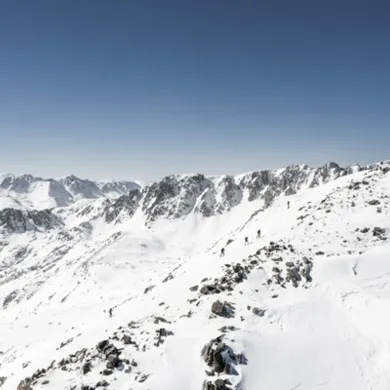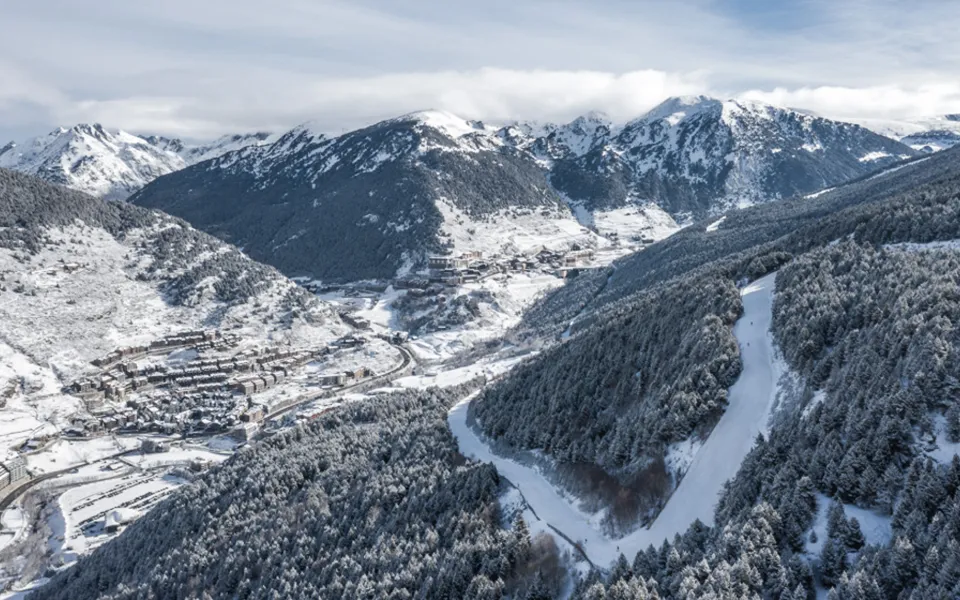 The Pyrenees Mountain Range is one of the most spectacular places in the world, with the main crest forming a natural border between Spain and France and with the Andorra ski resorts in the Pyrenees attracting millions of visitors every year.
The Pyrenees Mountain Range is one of the most spectacular places in the world, with the main crest forming a natural border between Spain and France and with the Andorra ski resorts in the Pyrenees attracting millions of visitors every year.
If you have visited before or are planning a skiing holiday in Andorra, you may be keen to learn some interesting facts about the Pyrenees Mountains. If so, you’ve come to the right place, as we’ll break down below various fun facts about the Pyrenees Mountains for kids and adults alike.
Exploring the rich history of the Pyrenees Mountains
Let’s begin with the history of the Pyrenees Mountains, which brings us to one of the little-known facts about mountains in Europe: that the Pyrenees Mountains are actually older than the Alps. The sediments of the Pyrenees were first deposited during the Paleozoic and Mesozoic eras, before the major changes came during the Cretaceous era, between 100 and 150 million years ago, bringing about the formation of most of the Pyrenees Mountain Range.
In much more modern times, there have been interesting political developments in this part of the world, leading to the border that exists today between France and Spain, which is one of the most natural borders in Europe.
This is also where Andorra fits in. Although Andorra dates back to the ninth century, it wasn’t until the 13th century that the shared sovereignty over Andorra emerged, with France and Spain reaching an agreement. In the 20th century, Andorra was able to set up its own government, but it still has two co-princes, namely the Bishop of Urgell and the president of France.
Now that we’ve laid out the basic facts about Pyrenees history, let’s take a look at five fun facts about the Pyrenees Mountains:
The name comes from Princess Pyrene
According to Greek Mythology, the name of this mountain range comes from that of Princess Pyrene, the lover of Heracles. The story goes that they had a baby which turned out to be a serpent, so she ran away to the woods and died. It is said that Heracles piled up rocks to build a tomb for her, rocks which became the Pyrenees Mountains.
The Pyrenees are like a real-life Tower of Babel
The Tower of Babel myth, which explains how the world ended up with so many languages, is quite relevant to the people of the Pyrenees Mountain Range. Here, there are so many languages spoken. Spanish, French and Catalan are the most common, but some residents also speak Aragonese, Basque and Occitan, as well as a lot of English.
Half of the Pyrenees are covered in snow in winter
One of the most well-known facts about Pyrenees Mountains is that they provide excellent skiing opportunities. That is because of the geography and also because of the snowfall, with approximately half of the mountain range covered in snow in the winter months.
The largest solar furnace in the world is in the Pyrenees
The Odeillo solar furnace, which stands at 54 meters tall and 48 meters wide, is the largest solar furnace in the world. Located in the French Pyrenees, it can produce a peak power of 1000 kW.
NASA has conducted a lot of research in the Pyrenees
Also in the French section of the mountain range stands the Pic du Midi Observatory. A large telescope is in place that was funded by NASA, who used it as part of the preparation for the Apollo missions and other projects.
Breathtaking landscapes: An overview of the Pyrenees Mountain Range
The breathtaking landscapes of the Pyrenees Mountain Range are what stand out the most for the majority of visitors, with the mountains literally standing tall across the skyline. One of the best facts about Pyrenees mountains to commit to memory is the fact that there are 19,465 named mountains in this range.
Of course, some of these are smaller than others. But, there are a total of 126 summits in the Pyrenees Mountain Range which stand above 3,000 metres.
Fascinating facts about Pyrenean wildlife and flora
Many people want to know what is a mountain made of, and beyond the actual rocks from the tectonic plates coming together, they are usually referring to the wildlife and flora of the mountain range in question.
When it comes to the Pyrenees, there is a really interesting mix of wildlife, from vultures to eagles to otters to brown bears and more. One of the most interesting facts about the Pyrenees Mountains is that three brown bears that were captured in Slovenia were released in the Pyrenees in the mid-1990s. There are also certain species that are unique to this part of the world, such as the Pyrenean ibex, the Pyrenean brook salamander or the Pyrenean desman.
As for the flora of the region, the eastern Pyrenees are actually quite barren due to the climate there. But, the rest of the mountain range has a lovely mix of central European and Mediterranean flora.
Environmental significance: How the Pyrenees Mountains impact the surrounding region
Of course, the environment and concerns about climate change are just as much of an issue and talking point in the Pyrenees as anywhere else. It is believed that rising temperatures have caused the melting of the Pyrenean glaciers over several years, and only around 40 still remain.
This has an impact on the region as a whole, especially given how the Pyrenean populations in Andorra, Spain and France rely so much on the ecosystem that has been in place for centuries.
Cultural heritage and traditions: Insights into life in the Pyrenees region
In terms of the culture and traditions of this part of the world, it’s important to highlight the love for skiing in the winter and exploring the mountains in the winter. This is something that this region is famous for, and that will surely remain the case for some time.
This leads into another of the cool facts about Pyrenees populations, which is that life expectancy is very high in this region. That can be seen clearly when looking at Andorra, the microstate that is part of the Pyrenees in its entirety. The healthy lifestyle has contributed to Andorrans having one of the highest life expectancies in the world. In 2023, the Andorra life expectancy is set at 81.6 for males and 86.0 for females.
